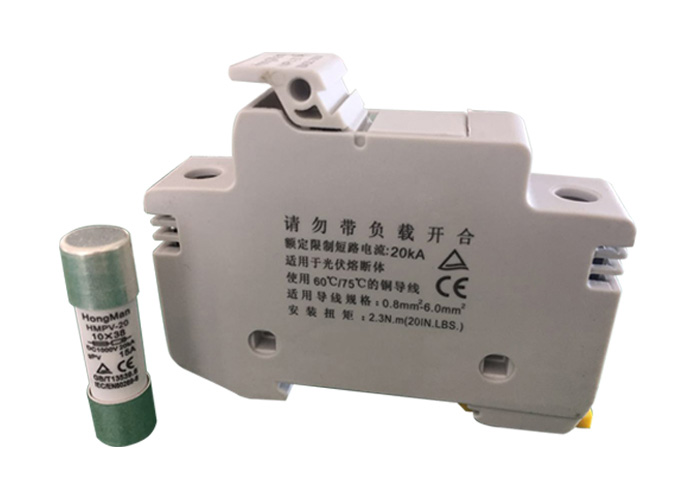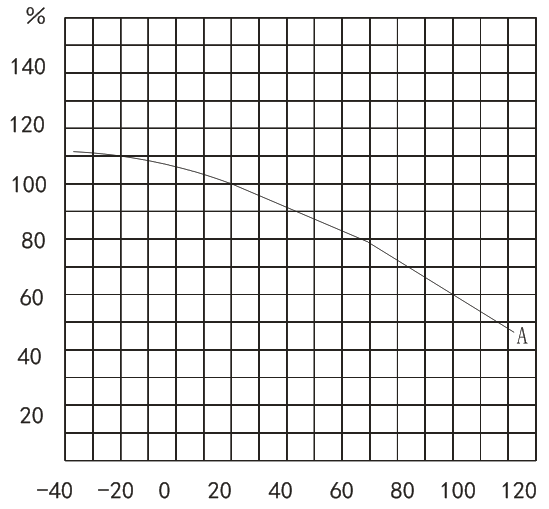HMPV-20 Fuse for solar PV system protection
Datasheet of fuse for solar PV system protection

●Product name: Fuse for solar PV system protection
●Base material :PA66
●Model of fuse link:HMPV-20
●Meaning of fuse model
Meaning of fuse model

● Standard: IEC60269-6:2010;GB/T13539.6-2013
● Certification: TUV; CE
● Main Purpose
Applicable in the circuit of rated voltage up to DC1000V and rated current 2A-20A and rated current breaking capacity up to 20KA for the purpose of short-circuit and over-load protection of PV power generating devices and other semiconductor devices. The fuses are used in combiner box of solar PV system.
●Technical Parameters
■Electrical characteristic
▲ Rated operating voltage Un:DC1000V
▲ Rated current of fuse link In:2A、3A、4A、5A、6A、8A、10A、12A、15A、16A、20A
▲ Rated breaking capacity I1:20kA
■Breaking Range and Usage Category
▲ “gPV” means fuse link with full-range DC breaking capacity for solar power system
■Normal Operating and Installation Conditions
▲ Altitude :≤2000m
▲ Atmospheric conditions
Temperature: the air relative humidity at the max temperature +60℃at the installation site shall not exceed 50%; a higher relative humidity is allowed at a lower temperature; the monthly average minimum temperature in the wettest month shall not exceed -25℃, and the monthly average maximum relative humidity in this month shall not exceed 90%. Take measures in case of condensation on the product due to the temperature change.
▲ Pollution Degree: Degree 3
▲ Installation Class: Class III
▲ Fuses mounted where there is no obvious shake and impact vibration
▲ Ambient Temperature -25℃~+60℃
■Overall Dimension

Base Overall and Installation Dimension

Overall Dimension of PV Fuse Link
■ Corrected value of operating current at different ambient temperature
At ambient temperature 20℃, we suggest the actual operating current of fuse link not exceed rated current value. As for fuse selection, take into consideration the environmental and operating conditions, such as closing degree, air flow, connecting cable size, length, cross sectional area and instantaneous peak values and etc. The current carrying capacity test of fuse link is conducted at the ambient temperature 20℃, and will be affected by temperature change in actual operation. The higher the ambient temperature is, the higher the operating temperature of fuse link gets, and the shorter the service life becomes. On the contrary, working at a lower temperature will extend the life of fuse link.

Typical curve on the impact of ambient temperature to current carrying capacity

 Chinese
Chinese English
English
